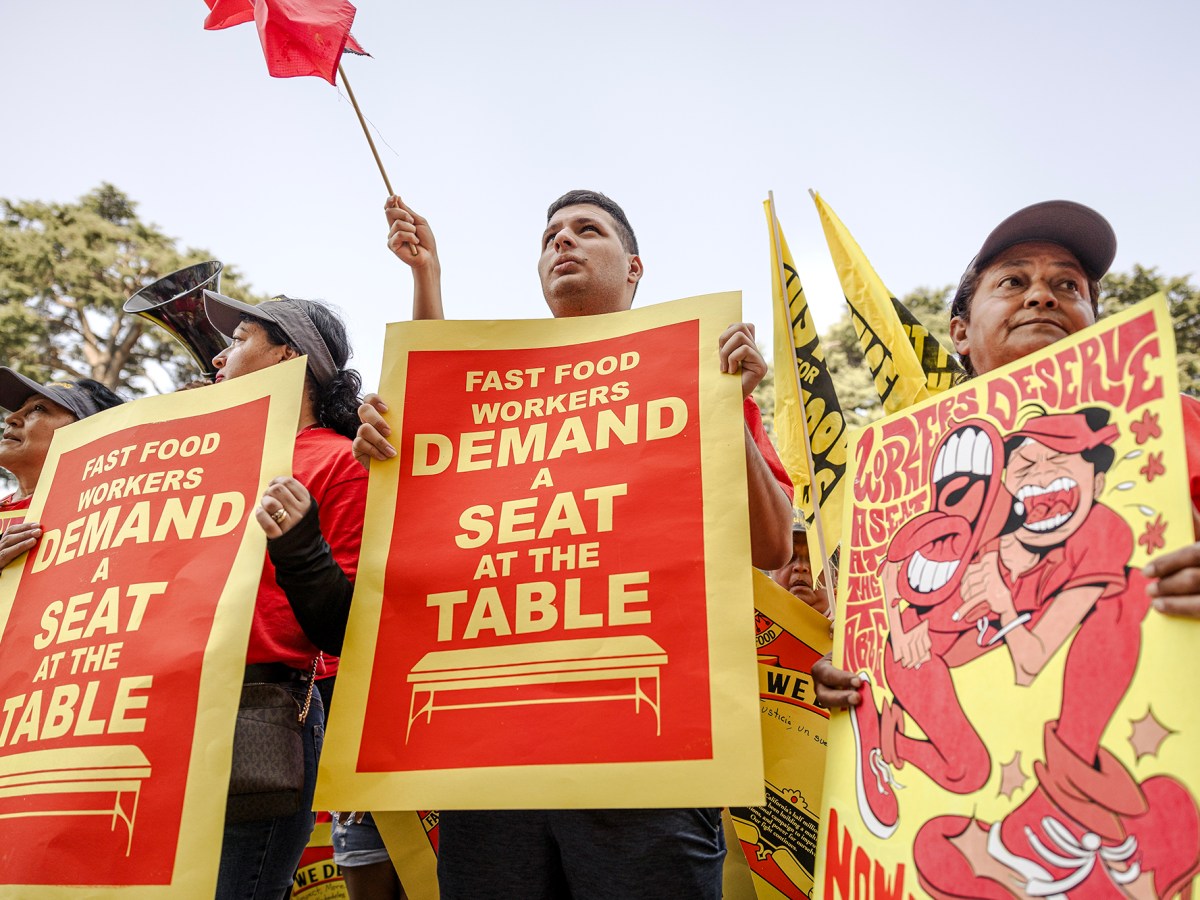It’s really expensive to live in California. That fact, more than anything, inspired a decade of policy changes in the Capitol to raise the minimum wage for California workers.
Today, California’s $16 minimum wage is among the highest in the nation, but there is ongoing debate about whether it is enough for low-wage workers to afford a decent living. Meanwhile, business owners say they’re passing the higher labor costs on to customers at the register.
Here’s a look at how California increased pay for low-wage workers and what the changes mean for the state’s economy.
Raising the minimum wage

California became the first state to commit to a $15 an hour minimum wage when then-Gov. Jerry Brown signed a law that ratcheted up the pay floor from $10.50 in 2017.
The law included an inflation adjustment, which brought the California minimum wage to $16 an hour in 2024.
California has experimented with a higher minimum wage in other ways, including local measures that require higher pay in high-cost cities and industry-specific laws for fast-food and health care workers.
Cities with the highest minimum wage in California
Dozens of California cities, particularly in coastal communities with a high cost of living, have adopted local minimum wage ordinances.
The first was San Francisco. Its local minimum wage dates back to 2003. Its minimum wage today is $18.67.
Today, California’s highest local minimum wage is $19.03 in West Hollywood.
Fast food and health workers earn more

Gov. Gavin Newsom signed two laws in 2023 that set a state higher minimum wage for workers in two specific industries: fast-food and health care.
Fast-food workers now earn at least $20 an hour under a law that took effect on April 1, 2024.
The union-backed law that instituted higher pay for 400,000 fast-food workers also created a fast-food industry council that has the power to set future wage increases and to advise on working conditions.
Health care workers will see a series of wage increases to gradually raise their pay floor to $25 an hour by 2033. The first step was supposed to take effect on June 1. Newsom and the Legislature delayed the increase until at least Oct. 15, an adjustment meant to help them address the state budget deficit.
Does increasing the minimum wage affect prices?

Minimum wage increases can lead to consumers paying more money for products and services.
Notably, fast-food restaurants such as McDonald’s, Chipotle and Chick-Fil-A increased prices after California’s law increasing the minimum wage for their employees took effect.
Research from UC Berkeley’s Goldman School of Public Policy found that a “10% minimum wage hike translates into a .36% increase in the prices of grocery products.”
Who earns the minimum wage?
The majority of low-wage workers in California are either under age 25 or over 50, according to an analysis of Census data by the Legislative Analyst’s Office.
About 40% of them have children under age 18. Most California low-wage earners are not married. About 10% of them are the sole breadwinners for households with children, according to the analysis.
Many are immigrants. They make up about 40% of the state’s low-wage earners.
Which industries have the most minimum wage workers?
Many low-wage workers in California hold positions that were regarded as “essential” during the COVID-19 pandemic.
They are often in-home care givers, clerks in retail stores, farmworkers and restaurant workers. The Legislative Analyst’s Office uses the term “low-wage workers” to refer to employees who made up to $17.50 per hour at their main job in 2023. These workers would be affected directly by proposals to increase the statewide minimum wage.
Does increasing the minimum wage affect unemployment?

Economists have found that minimum wage increases can cause employers to offer fewer jobs, but there’s ongoing debate about the severity of potential job losses.
In California, some fast-food franchises say they are lowering labor costs by accelerating a shift to automated service. They are installing self-service kiosks, experimenting with robots in the kitchen and outsourcing food delivery to apps like DoorDash and Uber Eats.
A 2023 report from the Congressional Budget Office projected that increasing the federal minimum wage from $7.25 an hour to $17 would reduce employment by about 700,000 jobs. That’s .4% of the overall workforce.
The minimum wage doubled in two states — California and New York — since 2014. A recent study found the higher minimum wage in those states actually increased employment in the fast-food sector.
“We find that these large minimum wage increases both raised pay for workers at the bottom of the earnings ladder and increased employment,” wrote the authors, a group of economists from the University of Victoria, UC Berkeley and UC Davis.
Is the minimum wage enough to live on?

California’s minimum is high enough to ensure that full-time workers earn more than the federal poverty threshold.
The state’s expensive cost of living, however, means a minimum wage income might not be enough to make ends meet.
About 8% of California workers — 1.3 million people — were living in poverty in 2023, according to a poverty measure by the Public Policy Institute of California that takes into account the state’s housing costs and safety-net benefits.
While there is no official living wage measure, the Massachusetts Institute of Technology’s living wage calculator puts the living wage in California at $23.81 for a working couple with one child, and $21.24 for a single adult with no children.



